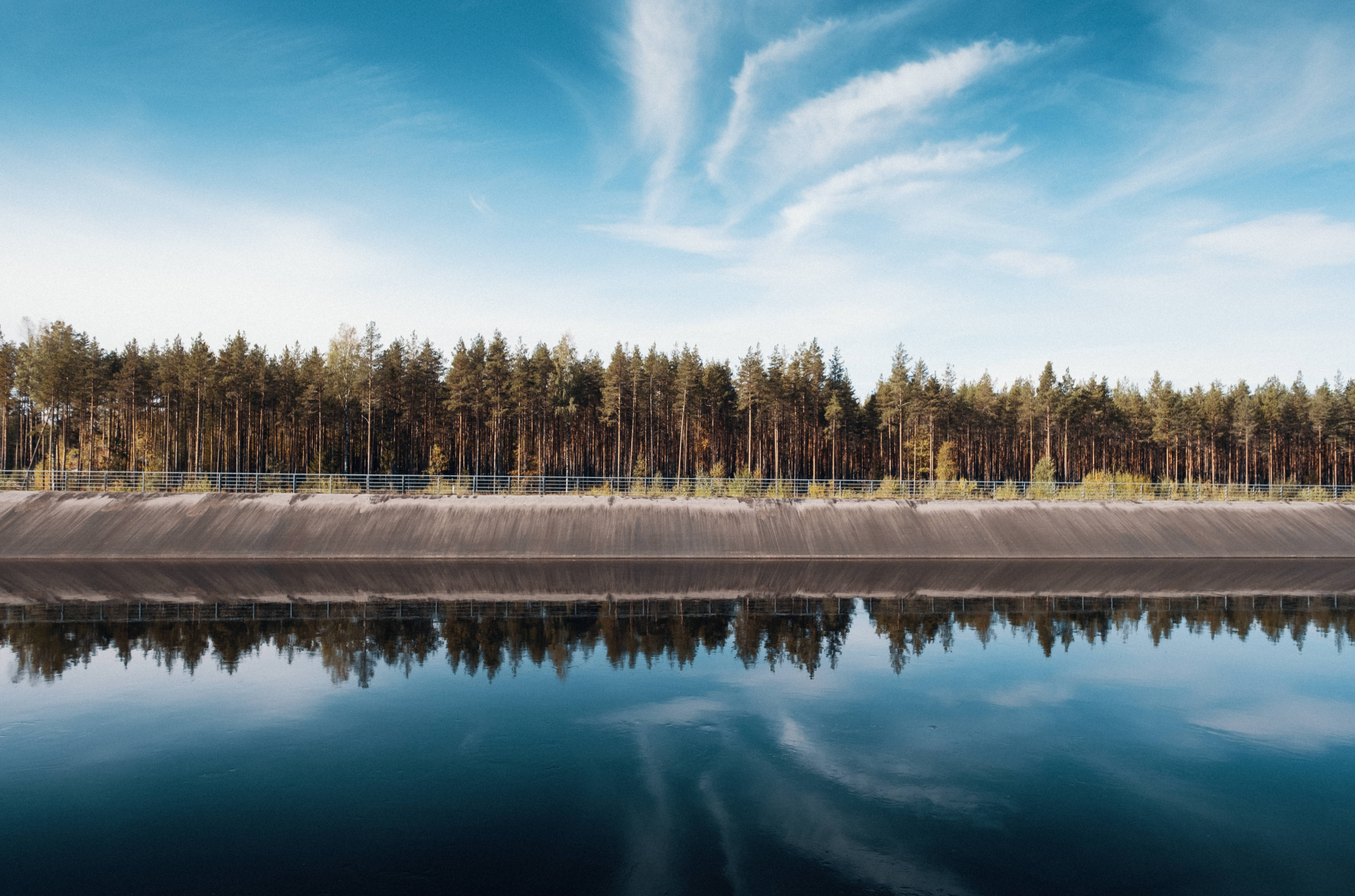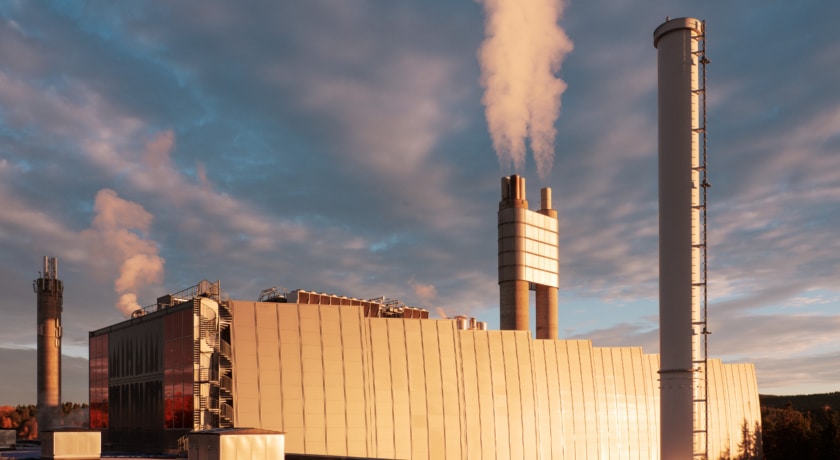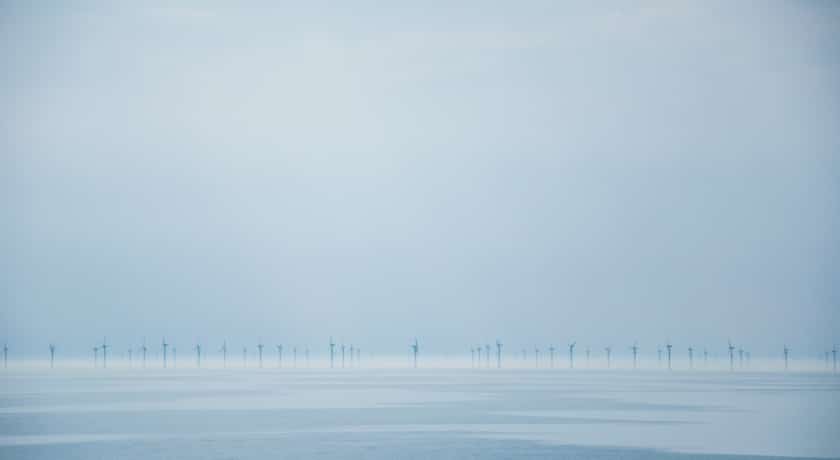
Hydropower: Hafslund Eco Vannkraft
A word from the Managing Director
We work in close proximity with nature, and those of us who work with renewable energy need to respect the natural environment. Climate change means there will be more variable weather in the future, which will make it more challenging to manage the forces of nature.
The extreme weather event “Hans” that occurred last August made it clear as to how nature will test us in the coming years. The failure of the dam at Braskereidfoss power plant, which turned into a crisis-in-a-crisis during “Hans”, demonstrated that we also need to improve our procedures and systems to manage more extreme weather.
During 2023 we again saw major fluctuations between drought and flooding, and cold and heat. This impacts prices – which are increasingly changing in line with the weather. Following the extreme weather event “Hans” we had a long period of power prices being at around zero in Eastern Norway, but towards the end of the year we again saw very high prices as a result of cold and calm weather.
We need to take care of what we have. Both power prices and floods show us that hydropower, and particularly regulated hydropower, is of high value. Among other things, last year saw the completion of the Dokkfløydammen upgrade. This is one of the largest and most important reservoirs in the county of Innlandet. The upgrade allows for better flood management and increased security.
We also need more hydropower. We are working on several projects that can produce new power, and are now preparing a licence application for Sarp 2. This is an expansion of the power generation in Sarpsborg, where power has been produced since 1899. It is still possible to increase power generation, and the power plant can also help to divert flooding at Sarpsfossen.
One thing that does not fluctuate, but unfortunately only keeps rising, is the cost of developing new hydropower. This is a result of factors such as pressured supply chains and high commodity prices. It can be demanding to realise Hafslund’s projects when there are high costs, more uncertain framework conditions and uncertainty regarding developments in Europe.
When things fluctuate the most, it is important to take a breath and follow the procedures which we have in place. Everyone should come home safe and sound from work every day. After 18 months without injuries resulting in absence from work, we unfortunately had some incidents at the end of last year with the potential to cause injury. We take this seriously and have taken action. I am pleased to be part of a team in which we can talk about and learn from the mistakes that we make. This applies to both the big and the little things.
Despite our long history, we are a relatively new company. In the past year, we have streamlined our operational organisation to enable us to become a more holistic company. Our employees go to work every day to produce renewable energy and work hand-in-hand with nature. I am impressed by the efforts being made, the pride in the organisation and how well we are moving forward. Our employees and our shared culture are a good foundation for tackling the challenges that both we and society will be facing in the years to come.
Kristin Lian

Important events for the hydropower business in 2023
The Norwegian power system
The Norwegian hydropower system has normal annual production of 137 TWh and total output capacity of 34 GW. In a normal year, hydropower production accounts for approximately 87 per cent of Norway’s total power production. A particular feature of Norwegian hydropower is the ability to store energy and to produce as needed. There are currently over 1,000 reservoirs in Norway, which make up about half of Europe’s total reservoir capacity. Most of the reservoirs in Norway were constructed before 1990, although upgrades and expansions of the power plants have increased the ability to utilise these.
Norway has both hydropower that is adjustable, in the form of hydropower plants with reservoirs, and non-adjustable hydropower, in the form of run-of-river hydropower plants. Flexible hydropower possesses features that no other renewable production technology presently has, i.e. power production is able to be adapted to demand. Production in non-flexible hydropower is determined by inflow. Most reservoirs are normally drawn down for the spring in order to be filled again during the melting season, and in this way, the reservoirs also have a flood-mitigating effect.
Wind power in Norway has normal annual production of 17 TWh and installed output capacity of 5 GW. The Norwegian power system is closely linked to the Nordic countries and Europe through exchange connections that provide greater security for dry years and better use of energy resources.
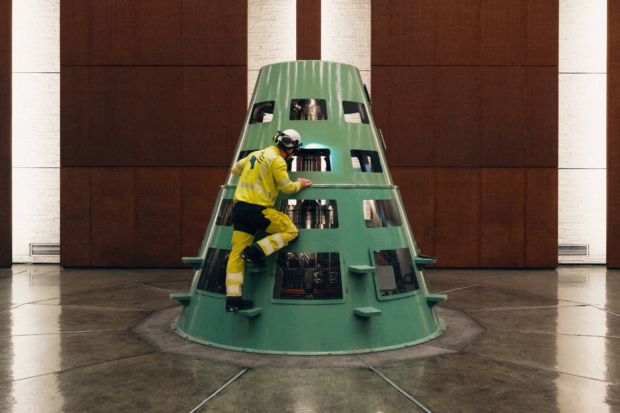
A particular feature of Norwegian hydropower is the ability to store energy and to produce as needed.
Hafslund’s hydropower
Hafslund’s hydropower business is the second largest in Norway, and Hafslund owns, operates and maintains 81 hydropower plants, provides system services to the power system, and sells power in the wholesale market. The hydropower business had 459 employees at the end of 2023. The annual normal power production is approximately 18 TWh (about 13 per cent of the total Norwegian hydropower production), and power plants with a total normal production of approximately 21 TWh per year are operated. That equates to enough electricity to supply more than 2.8 million people. Of the hydropower business’ annual normal production, about 60 per cent is adjustable (reservoir-based) and about 40 per cent non-adjustable (river power). Approximately 59 per cent of normal production is in price area NO1 (Southeast Norway), 36 per cent is in price area NO5 (Western Norway), and 5 per cent is in price area NO3 (Central Norway). The largest facility, Aurland 1, is Norway’s third largest power plant, with annual normal production of 2.3 TWh and total installed capacity of 840 MW. The plant covers the annual electricity consumption of approximately 115,000 households. The total installed capacity is approximately 5,200 MW. Further information about all of the power plants and their capacity is available at www.hafslund.no.
Norway and Europe have a strong need for new renewable energy, and Hafslund has the goal of increasing renewable power production both organically and structurally. Six new power plants have been completed in recent years that produce a total of over 1 TWh in new renewable power. Work is continuously being carried out on upgrading and expanding Hafslund’s power plants, and the equivalent of approximately 20-40 GWh of new renewable energy is added each year. In addition, Hafslund is looking for profitable development projects and there are currently several such projects under development. These projects collectively have the potential to contribute 700 GWh of increased renewable energy and 600 MW in increased output.

Six new power plants have been completed in recent years that produce a total of over 1 TWh in new renewable power.
The Norwegian power market in 2023
Price development
In 2023, electricity prices in Norway and Europe fell significantly from the levels seen in 2022, but were still high in a historical context. The average spot prices for the year for the southern price areas were 76 øre/kWh (194 øre/kWh) for NO1 (Southeast Norway), 90 øre/kWh (213 øre/kWh) for NO2 (Southwest Norway) and 76 øre/kWh (193 øre/kWh) for NO5 (Western Norway). In addition, the prices were 44 øre/kWh (42 øre/kWh) for NO3 (Central Norway) and 34 øre/kWh (24 øre/kWh) for NO4 (Northern Norway).
Price drivers
Continental prices and energy crisis in Europe
Following the most acute phase of the energy crisis in 2022, the prices on the continent also fell in 2023. This was due to somewhat reduced consumption and having been able to import enough LNG to have record high gas stores throughout 2023. Europe’s gas stores were completely full at the start of the heating season in winter 2023/2024. Despite this, there is a tight balance in the global LNG market and even minor disruptions in the market have in some cases had significant effects on prices.
Nuclear power in France had a significantly better year in 2023 than in 2022, with a 14 per cent increase in production that was equivalent to 40 TWh. A large amount of new renewable energy was also fed into the European power system. Wind and solar production in Germany, France, Spain and the United Kingdom rose to 436 TWh, an increase of 10 per cent, equivalent to 40 TWh, from 2022.
For 2023, power prices were 109 øre/kWh (237 øre/kWh) in Germany and 123 øre/kWh (244 øre/kWh) in the United Kingdom. This reduction also strongly contributed to lower prices in Norway.
Hydrology
The hydrological situation was generally good in 2023, with only minor discrepancies in the hydrological balance for the country as a whole. The year produced a high level of precipitation, which reached 152 TWh. Based on figures from NVE the historically normal level is 136 TWh. The high precipitation was particularly noticeable during the extreme weather event “Hans”. Despite the large amount of precipitation, usable inflow, i.e. the precipitation that could be used for power production, was somewhat below normal at 134 TWh, versus the historically normal level of 136 TWh. The situation was also relatively normal for the individual parts of the country, with the exception of NO1, which had reservoir levels of 102 per cent in week 32. NO5 also had high reservoir levels in autumn, with a new maximum level for week 42 of 92.9 per cent. There were periods in which this resulted in very low power prices, because some run-of-river hydropower plants had to ramp up production to remove water in order to mitigate potential new floods. For NO2, NO3 and NO4, reservoir levels were relatively normal during the year.
Transmission capacity
Due to limited transmission capacity from the north to the south of Norway and Sweden, Central and Northern Norway were not impacted as much by the price drivers on the continent as Southern Norway. There were also periods in which internal restrictions in the transmission capacity in Southern Norway resulted in price differences between the areas in the south.
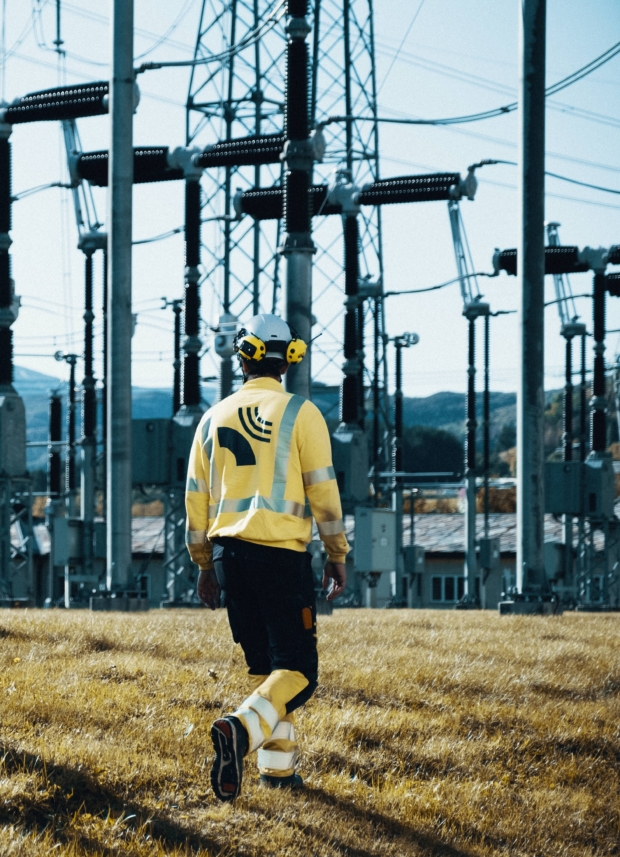
Statement of value creation
| NOK million | 2023 | 2022 |
|---|---|---|
| Sales revenue | 14,611 | 23,776 |
| Other gain/loss | 865 | -3,334 |
| Other operating revenue | 123 | 91 |
| Revenues and other income | 15,599 | 20,534 |
| Energy purchases and transmission | -233 | -96 |
| Salary and other personnel costs | -579 | -526 |
| Property tax and other imposed costs and compensation | -530 | -532 |
| Other operating costs | -281 | -239 |
| Profit/loss from equity-accounted investees | 10 | 112 |
| EBITDA | 13,986 | 19,253 |
| Depreciation and amortisation | -669 | -510 |
| Operating profit (EBIT) | 13,317 | 18,743 |
| Net financial items | 163 | -144 |
| Profit before tax | 13,479 | 18,599 |
| Income taxes | -8,546 | -14,596 |
| Profit after tax | 4,933 | 4,003 |
| OTHER KEY FIGURES | ||
| Underlying operating profit/loss (excluding changes in value) | 11,998 | 19,182 |
| Underlying profit after tax (excluding changes in value) | 3,947 | 4,312 |
| Effective tax expense (as a % of pre-tax profit) | 63 % | 78 % |
| Investments in property, plant and equipment | 623 | 529 |
| Hydropower production (TWh) | 18.5 | 13.8 |
| Power price achieved (øre/kWh) | 73 | 150 |
| Spot price, price areas (øre/kWh) | 74 | 184 |
| Nordic system price (øre/kWh) | 64 | 137 |
| Number of employees | 459 | 400 |
The hydropower business had operating revenues of NOK 15.6 billion in 2023 (NOK 20.5 billion in 2022). Revenues and operating profit reflect high power prices in historical terms, but significantly lower prices than were seen in the extreme year of 2022. Hydropower production was 4 per cent higher than normal production, but a full 34 per cent higher than in 2022. The operating profit includes a profit of NOK 9 million (NOK 112 million) from the 20 per cent ownership interests in the Austri Raskiftet DA and Austri Kjølberget DA wind farms.
The achieved power price of 73 øre per kWh in 2023 was a decrease of 77 øre per kWh from the previous year, which, in isolation, contributed to decreasing the operating profit by NOK 10.8 billion in relation to 2022. The achieved power price was 1 per cent lower than the spot prices in the hydropower business’ production areas, and in addition to the sale of concessionary power at prices determined by the government, must also be viewed in connection with the hedging activity through the sale of power to the industry at fixed prices and realised losses from financial power hedging. Revenues from the sale of guarantees of origin were NOK 0.8 billion (NOK 0.2 billion). The operating profit includes a change in value of NOK 1.3 billion (NOK -0.4 billion) related to financial power derivatives recognised at market value in profit or loss. When adjusted for changes in value in the operating profit, the underlying operating profit was NOK 12.0 billion in 2023, a decrease of NOK 7.2 billion from the previous year.
Power production of 18.5 TWh in 2023 was 4.7 TWh higher than in 2022 and 0.8 TWh higher than normal production. In isolation, higher power production contributed NOK 3.5 billion in increased operating profit compared to 2022. The incident at Braskereidfoss in August resulted in the power plant being temporarily out of service due to dam failure and water penetration into the Braskereidfoss 1 and Braskereidfoss 2 power stations. Preliminary assessments are that the power plant may be back online during 2026 at the earliest. Braskereidfoss has an annual normal production of approximately 170 GWh, which is just under 1 per cent of the hydropower business’ annual normal production. Other than the incident at Braskereidfoss, there were good operations and resource allocation, as well as a high level of availability at the power plants during the year.
Operating expenses, including depreciation, were NOK 2.3 billion in 2023, an increase of 20 per cent from 2022. It was primarily an increase of 15 per cent in less influenceable costs such as transmission costs and property taxes that contributed to this; however, more employees and general price inflation also contributed to the increase from 2022. The low transmission costs in 2022 must be viewed in connection with a negative variable tariff. In connection with the incident at Braskereidfoss power plant, NOK 130 million was recognised as write-downs in the balance sheet. A further NOK 20 million in clean-up/remediation costs was recognised as expenses. The hydropower business has business interruption insurance and property damage insurance which are not taken into account in the financial statements for 2023, but which will be taken into account when this process is tentatively clarified during 2024.
The tax expense of NOK 8.5 billion (NOK 14.6 billion) corresponds to an effective tax rate of 63 per cent (79 per cent). The high tax rate must be viewed in the context of the special taxation of the hydropower business, which involved resource rent tax of 45 per cent and high-price contribution for power prices above 70 øre per kWh for the first nine months of the year, in addition to the general corporate tax rate of 22 per cent. The reduction in the effective tax rate is also a consequence of results from financial power hedging, which were NOK 0.9 billion (NOK -3.3 billion) in 2023, not being subject to resource rent tax.
The profit after tax of NOK 4.9 billion (NOK 4.0 billion) for 2023 was an increase of 24 per cent from the previous year. The underlying profit after tax for the year (profit after tax, excluding changes in value) was NOK 3.9 billion (NOK 4.3 billion) in 2023.
